#WomenInStroke Initiative organized by the World Stroke Academy (WSA)
08 Mar 2021Taking International Women’s Day as an occasion, the WSA celebrates the achievements and careers of women with this initiative!
Taking International Women’s Day as an occasion, the WSA celebrates the achievements and careers of women with this initiative!
#WomenInStroke #IWD2021

Dr. Anita Arsovska is Head of Department for Urgent Neurology at the University Clinic of Neurology and Professor of Neurology at the University "Ss Cyril and Methodius", Faculty of Medicine in Skopje, North Macedonia.
Prof. Arsovska is full member of the European Academy of Neurology, Fellow of the European Stroke Organization and Board member of the World Stroke Organization. She is current Vice-President of the Stroke Alliance for Europea and Associate Commissioning Editor of the World Stroke Academy.
Prof. Arsovska participated in the Stroke Action Plan Europe as member of the acute stroke management working group. She is very active in promoting stroke prevention and raising stroke awareness, organizing many public stroke campaigns, scientific meetings and supporting the European and World Stroke Day.
References:
1. E. Berge, GA Ford, C. Stapf, RA-S Salman, U Fischer, S. Conveney, C. Weimar, M. Arnold,A. Arsovska, R. Lemmens, PJ Nederkoorn, PJ Kelly. Are there opportunities for a closer collaboration on clinical stroke research in Europe? European Stroke Journal 2018, Vol. 3 (I) 22-28.
2. Vojtikiv-Samoilovska D,Arsovska A. Prevalence and predictors of depression after stroke-results from prospective study. Open Access Maced J Med Sci, 2018; Apr 24;6(5):824-828.
3. Vojtikiv-Samoilovska D,Arsovska A. Socio-Demographic Characteristics of the Patients with a Post Stroke Depression from the Municipality of Tetovo, Republic of Macedonia.Open Access Maced J Med Sci. 2018 May 14;6(5):782-785.
4. Arsovska A, Arsovski Z. Acute Ischemic or Haemorrhagic Stroke Syndromes in M. Turgut (ed.), Fungal infections of the Central Nervous System, Springer-Verlag-Berlin Heidelberg 2019
5. Kelly P, Salman RA, Arsovska A, Dippel DW, Fischer U, Ford GA, Fuentes B, Lemmens R, Marshall JC, Nederkoorn PJ, Robinson T, Weimar C, Berge E; ESO Trials Network Committee ESOTA Steering Group.Building a European 'network of networks' for stroke clinical research - The European Stroke Organisation Trials Alliance (ESOTA).Eur Stroke J. 2019 Sep;4(3):224-232. doi: 10.1177/2396987319845589.
6. Lorenzano S, Kremer C, Pavlovic A, Jovanovic DR, Sandset EC, Christensen H, Bushnell C,Arsovska A, Sprigg N, Roffe C, Ijäs P, Gdovinova Z, Alexandrov A, Zedde M, Tassi R, Acciaresi M, Lantz M, Sunnerhagen K, Zarkov M, Rantanen K, Perren F, Iversen HK, Kruuse C, Slowik A, Palazzo P, Korv J, Fromm A, Lovrencic-Huzjan A, Korompoki E, Fonseca AC, Gall SL, Brunner F, Caso V, Sacco S; SiPP Trial Investigators and ESO-WISE Group.SiPP (Stroke in Pregnancy and Postpartum): A prospective, observational, international, multicentre study on pathophysiological mechanisms, clinical profile, management and outcome of cerebrovascular diseases in pregnant and postpartum women.Eur Stroke J. 2020 Jun;5(2):193-203. doi: 10.1177/2396987319893512.
7.Mikulík R, Caso V, Bornstein NM, Svobodová V, Pezzella FR, Grecu A, Simsic S, Gdovinova Z, Członkowska A, Mishchenko TS, Flomin Y, Milanov IG, Andonova S, Tiu C,Arsovska A, Budinčević H, Groppa SA, Bereczki D, Kõrv J, Kharitonova T, VoskoMR.Enhancing and accelerating stroke treatment in Eastern European region: Methods and achievement of the ESO EAST program.Eur Stroke J. 2020 Jun;5(2):204-212. doi: 10.1177/2396987319897156.
8.Joveva E, Ðorđević G, Milošević V, Arsovska A, Živković M. Degree of cognitive impairment in patients with carotid stenosis in relation to cerebral ischemic lesions. Vojnosanitetski pregled, 2020; 82-82
9. Arsovska A, Babunovska M, Aleksovska K. Repeated intravenous thrombolysis in recurrent ischemic stroke: a case report and review from the literature. Rad Hrvatske akademije znanosti i umjetnosti. Medicinske znanosti, 2020; 78-83

Sarah Belson
International Development Manager
World Stroke Organization
BA Hons Sociology, MSc International Development Studies
Sarah has worked with the WSO for nearly 6 years. She leads the stroke support organization development programme. Sarah facilitates knowledge exchange, networking and skills development for the WSO’s stroke support organization membership.
Sarah has 25 years’ experience working in community development, and health and social care in the UK and internationally, and has worked in countries including Sudan, Indonesia, Myanmar and China.
In the health sector, Sarah has previously supported community responses to HIV prevention and care, the implementation of the UNICEF Facts for Life programme and youth mental health and well-being programmes.
At the WSO, Sarah has helped to grow the stroke support organization membership, and in particular has focused on outreach to stroke advocates in sub Saharan Africa and South East Asia. Sarah was involved in the development of WSO’s Advocacy Toolkit and the online platform for WSO members, Stroke Connector.
References:
-Gubitz G, Saini M, Belson S, Sahathevan R, Sandercock P. How can the World Stroke Organization (WSO) optimize education in stroke medicine around the world? Report of the 2018 WSO Global Stroke Stakeholder Workshop. Int J Stroke. 2019 Oct;14(8):803-805. doi: 10.1177/1747493019874726. Epub 2019 Sep 10. PMID: 31506027.

Professor Bernhardt has worked with stroke patients for over 30 years. She co-heads the Stroke Theme at the Florey Insitute of Neuroscience and Mental Health, Australia, leadinga reserach team developing and testing interventions to improve stroke recovery. She is Director, National Health and Medical Research Council (Australia) Centre of Research Excellence in Stroke Recovery, and a world leader of multi-country rehabilitation trials (eg AVERT, AVERT DOSE). She led two international Stroke Recovery and Rehabilitation Roundtables that set new research standards, culminating in development of the new International Stroke Recovery and Rehabilitation Alliance (ISRRA) in 2020. Julie is a strong advocate for Women in Science.
References:
Website for NOVELL (Neuroscience Optimised Virtual Living Lab)
Bernhardt, J., Urimubenshi, G., Gandhi, D. B. C., & Eng, J. J. (2020). Stroke rehabilitation in low-income and middle-income countries: a call to action.The Lancet, 396(10260), 1452-1462. doi:10.1016/S0140-6736(20)31313-1
See the full SRRR I & II series in the International Journal of Stroke 2017, 2019:
Bernhardt, J., Borschmann, K., Boyd, L., Carmichael, S. T., Corbett, D., Cramer, S. C., . . . Ward, N. (2017). Moving rehabilitation research forward: developing consensus statements for rehabilitation and recovery research.International J of Stroke. Vol 11 (4) 454-458.
Bernhardt J, Hayward KS, Kwakkel G, Ward NS, Wolf SL, Borschmann K, et al. Agreed definitions and a shared vision for new standards in stroke recovery research: The Stroke Recovery and Rehabilitation Roundtable taskforce.International J of Stroke. 2017;12(5):444-50
Bernhardt, J., Borschmann, K. N., Kwakkel, G., Burridge, J. H., Eng, J. J., Walker, M. F., Bird, M.-L., Cramer, S. C., Hayward, K. S., O'Sullivan, M. J., Clarkson, A. N., Corbett, D., & for the SRRR2 Collaboration. (2019). Setting the scene for the Second Stroke Recovery and Rehabilitation Roundtable. International Journal of Stroke. doi: 10.1177/1747493019851287
Bernhardt, J, Hayward, K, Dancause, N; Lannin, N, Ward, N, Nudo, R, Farrin, A, Churilov, L, Boyd, L, Jones, T, Carmichael, S. Corbett, D, Cramer, S. (2019) A stroke recovery trial development framework: Consensus based core recommendations from the Second Stroke Recovery and Rehabilitation Roundtable, International Journal of Stroke 14(8):792-802 doi: 10.1177/1747493019879657

Dr. Bushnell completed her neurology residency training, stroke research fellowship, and graduate degree in clinical research at Duke University. After 6 years on faculty in the Duke Division of Neurology, she joined the Neurology faculty at Wake Forest Baptist October 2007. She was Associated Director of the Women’s Health Center of Excellence from 2008-2010, led the WFB Stroke Center from October 2010 to June 2018, and has been Vice Chair of Research in the Department of Neurology since July 2018. Her clinical practice is focused on inpatient and outpatient stroke treatment across the continuum. Her research spans women’s issues related to stroke, including sex differences, preeclampsia, and a registry to study maternal and newborn stroke. Her current focus is on novel treatments for post-stroke cognition, and post-discharge care for stroke patients. She led the development of a new model of care using a nurse practitioner/nurse care team, which was shown to decrease 30-day readmissions. She is co-PI of COMprehensive Post-Acute Stroke Service (COMPASS) Study, a pragmatic clinical trial funded by Patient Centered Outcomes Research Institute, which compares an enhanced version of the WFBMC post-acute stroke model of care vs usual care in 41 hospitals across North Carolina. She is PI of the Western NC StrokeNet Regional Coordinating Center funded by NIH/NINDS, and co-Director of the Neuroscience Clinical Trial and Innovation Center at WFBMC.
References:
COMPASS:
https://www.ahajournals.org/doi/epub/10.1161/CIRCOUTCOMES.119.006285
https://www.ahajournals.org/doi/epub/10.1161/CIRCOUTCOMES.117.004444
https://bmchealthservres.biomedcentral.com/track/pdf/10.1186/s12913-019-4771-0.pdf
https://agsjournals.onlinelibrary.wiley.com/doi/epdf/10.1111/jgs.15322
Sex Differences and Stroke in Women
https://www.ahajournals.org/doi/epub/10.1161/01.str.0000442009.06663.48

Professor Cadilhac, has a clinical background in nursing and is a health services researcher and NHMRC Senior Research Fellow with over 220 articles. She heads the Translational Public Health and Evaluation Research Division, Stroke and Ageing Research at Monash University, and is the Data Custodian for the Australian Stroke Clinical Registry, Florey Institute. Her skillset includes epidemiology, implementation science and economic evaluation.

1.)What's your career advice for young women about to take their first steps in stroke research/advocacy/medicine?
My first piece of career advice would be to immediately start building up a network so you can contribute to projects. To be successful, one needs to take an active part in vibrant and relevant teams that are able to produce remarkable results. Secondly, finding a work culture best suited for you will ease the strain of strenuous workloads made up of long, tedious hours. Moreover, mentors have played extremely important roles in fostering the careers of both men and women in the field of stroke.
2.) Did you have a mentor? What is the role of female mentorship?
Unfortunately, I did not have a mentor, like many of my female colleagues. I initiated my career in neurology when there were only a few women in leading positions, and often these female leaders had to struggle in an exclusively male-controlled environment. However, I was fortunate to have worked in an open and fruitful environment that made up for the lack of mentorship . Today, female mentorship is widely sought and can be developed due to the networking that female physicians have been carrying out over the last couple of decades. The role of female mentorship is to promote the participation of female expertise.
3.) What have been major challenges in your career?
During my career, I have had to face many challenges that have included discrimination, power struggles and periods of burn out. Of the three, the most frequent and problematic has been the second, and this, unfortunately, reflects neglect of our true mission, that of putting the patient first and foremost.
4.) How did you become interested in stroke medicine?
During my 2nd year of Neurology training, my Director sent me to Germany to learn how to set up the future Perugia Stroke Unit. During those six months, my passion for stroke flourished because I was in daily contact with eminent personalities who were passionate pioneers of current day stroke care.
5.) Where do you see opportunities for women in the field?
Opportunities for women in the field of stroke exist in areas ranging from research, management and clinical care, and today they are more abundant. And as these areas require diverse talents and personalities, there is something suitable for everyone
6.) Do you have a career goal?
Yes, I am planning to work exclusively on women's health in the near future. This is because, after more than 20 years of working with female stroke patients, I have realized that women need to be better educated regarding their responsibilities associated with maintaining their health.
7.) What does it mean for you when somebody is outstanding in your area of research or field? Do you agree with the current criteria?
The current criteria should emphasize interpersonal skills a bit more. Academic success, of course, should continue to be the cornerstone of a leading researcher or clinician, with publications being the factor to consider most.
8.) Do you think leadership in Neurology differs somewhat by gender? If yes, how?
I would say that there tend to be slight differences between male and female leaders in stroke. Specifically, males are often solely focused on conclusions, while females have their eyes on the process and the conclusion.
9.) In your opinion, what are the reasons for a women's lack of advancement into leadership positions despite no visible barriers?
This topic has received a lot of attention of late, and I am in agreement with most of the hard facts: women favor cooperation, they are more likely to be agreeable, and their family life can often impede upon their careers. I always continue to recommend that we cannot waste female talents due to the leaking pipeline.
10.) As a woman, what is your advice to young female colleagues who feel they are not taken seriously by patients or relatives at work?
Women in medicine tolerate these situations quietly because to speak up may attract backlash. I would suggest not remaining silent and not listening to those who tell you that respect from patients and colleagues must be earned.
11.) What is the best piece of advice you have received?
The best advice that I received is to believe is to always fight for my ideas and take the risk of failing in trying to archive new goals.
12.) What inspires you?
I am inspired by people working together and brain-storming on how to improve stroke patient care. In times of COVID, I missed hearing the laughter, the smell of coffee and the fun of interaction.
13.) What has been the greatest achievement of your career?
In 2014, I was elected as the first female president of the European Stroke Organisation. This election allowed me to serve the stroke society and foster the female presence in the leading positions of ESO.
14.) You are recognized/succesfull in your field, in what other field would you like to stand out?
I would like to be an expert on mental health in women to face daily challenges in realizing their professional and personal dreams.
Thank you, Valeria, for this inspiring interview and for sharing your valuable insights with us!
Valeria Caso is a 1st level Medical Director, Neurologist, currently employed in the Neurology and Stroke Unit wards of S. Maria della Misericordia Hospital in Perugia.
In 2003 she obtained a PhD in Cerebrovascular Diseases from the University of Perugia. She also participated in the ESO (European Stroke Organization) working group for the drafting of the first European guidelines for the ‘treatment of stroke in the acute phase’.
Since 2003 she actively deals with research on women and cerebrovascular diseases, publishing various scientific articles on gender differences in this pathology. In 2014 she founded the WISE (Women Initiative for Stroke in Europe) group. In 2014 she was elected president of ESO (first woman to fill this role), with the programmatic mission to increase female representation in the key positions of related scientific societies, as speakers and heads of scientific commissions. Also in 2014 she obtained the national scientific qualification as Associate Professor, and in 2017 the one of Full Professor.
Valeria Caso is associate editor of the ‘Neurological Sciences’ publication and member of editorial boards of numerous scientific journals, such as the ‘International Stroke Journal’ and the ‘European Stroke Journal’. Since 2020, Valeria is a member of the WSA Leadership Group.
References:
Interview: Women's contribution to stroke research & stroke care
- Women Initiative for Stroke in Europe Group
https://pubmed.ncbi.nlm.nih.gov/31984232/
https://pubmed.ncbi.nlm.nih.gov/31623547/
https://pubmed.ncbi.nlm.nih.gov/31236480/
https://pubmed.ncbi.nlm.nih.gov/30571452/
https://pubmed.ncbi.nlm.nih.gov/30516646/

Amy Edmunds leveraged findings from her graduate studies to launch YoungStroke, Inc. as a non-profit patient advocacy organization in 2005 after previously experiencing cryptogenic stroke.
Two key collaborations propelled her work. First, Edmunds coordinated the first international scientific conference to address young stroke in conjunction with Mayo Clinic in 2015. Secondly, she co-authored the Young Stroke Questionnaire as a clinical assessment tool in collaboration with the University of South Carolina in 2019.
Her research earned awards from the National Institute of Neurological Disorders & Stroke as well as the National Institute for Minority Health & Disparities. In 2018, she was re-elected by international peers to the WSO Board of Directors to represent stroke support organizations. In the same year, she was inducted as a Fellow of the WSO.
References:
YoungStroke- https://youngstroke.com/

Patrice Lindsay is currently the Director of Health Systems at the Heart and Stroke Foundation, Canada. She leads strategic directions for evidence informed systems change across the care continuum for designing and delivering services for individuals with a range of heart conditions, stroke and vascular cognitive impairment. She leads development of the Canadian Stroke Best Practice Recommendations clinical guidelines, quality and performance monitoring, and the active and meaningful inclusion of people with lived experience in these activities. Dr. Lindsay is a recipient of the Queen Elizabeth II Diamond Jubilee medal for her efforts to improve stroke care and outcomes in Canada and internationally. She has a degree in nursing from the University of Western Ontario and completed her PhD in Health Services Research, Evaluation and Outcomes at the University of Toronto, and sits on several national and international advisory committees and research collaborations.
References:

Sheila Martins is Founder and President of Brazilian Stroke Network, Neurology Professor of Universidade Federal do Rio Grande do Sul, Coordinator of Stroke Program at Hospital de Clínicas de Porto Alegre (public University Hospital), Chief of Neurology and Neurosurgery Service at Hospital Moinhos de Vento (private Hospital affiliate to Johns Hopkins Institute), completing her PhD in stroke neurology in 2008 in Universidade Federal de São Paulo.
In 2008, as advisor of the Ministry of Health, she started the organization of the National Stroke Program. She collaborated to create the National Stroke Policy of the Ministry of Health (April 2012) and now she is working for the establishment of the Policy, building stroke units and organizing stroke systems around the country. Since 2009, she is the coordinator of the World Stroke Campaign in Brazil. Sheila Martins is the President-Elect of the World Stroke Organization (WSO). She is member of the WSO Executive Board and member of the Guidelines & Quality, Research and World Stroke Campaign Committee.
References:
Certification of stroke centers in LATAM: http://www.globalstrokealliance.com/en/certification/
RESILIENT:
S.Martins et al. Thrombectomy for Stroke in the Public Health Care System of Brazil N Engl J Med 2020; 382:2316-2326
DOI: 10.1056/NEJMoa2000120
S.Martins et al. Past, Present, and Future of Stroke in Middle-Income Countries: The Brazilian Experience https://doi.org/10.1111/ijs.12062

Rita Melifonwu is a stroke nurse turned social entrepreneur. She is the founder of Stroke Action, a Stroke Support Organization that is the outcome of her UK Department of Health’s Mary Seacole Nursing Leadership Award action research study: developing nurses’ role in evidence-based stroke care. Rita won the World Stroke Day Award in 2015, and, was last year named a Leading Social Entrepreneur by Ashoka Foundation because.
Through her work, she influences policy change in stroke care, and, is a member of the NCD Technical Working Group, Federal Ministry of Health Nigeria.
Her prime interests include stroke advocacy for policy change; grassroots stroke awareness and prevention; rehabilitation and psychosocial support after stroke. Her recent innovations include the development of unemployed stroke survivors of working age as Stroke Entrepreneurs.
Rita is a member of the Board of Directors of the WSO, and, engages with key stakeholders to advance stroke research capacity within Stroke Support Organizations: she is a member of OSCAIL (Organized Stroke Care Across Income Levels); WHO Stroke Development Group for a Package of Rehabilitation Interventions; African Stroke Organization (ASO); and, ISRRA (International Stroke Rehabilitation and Recovery Alliance).

Sandy Middleton is a Professor of Nursing and Director of the Nursing Research Institute. Professor Middleton has a particular interest in stroke and implementation research and has been successful in obtaining grants totalling over $44.8 million. She was the lead investigator on the landmark NHMRC-funded QASC cluster trial demonstrating decreased death and dependency following implementation of nurse-initiated protocols to manage fever, hyperglycaemia and swallowing post-stroke, winning multiple national and international awards. These protocols are currently being translated into hospitals in 20 European countries. Professor Middleton is a Ministerial appointment to the NHMRC Health Translation Advisory Committee (HTAC) and sits on the board of directors for the NSW Agency for Clinical Innovation and the Clinical Excellence Commission. She is Director of the Sydney Partnership for Health Education, Research and Enterprise (SPHERE) Implementation Science platform; Director of the SPHERE Nursing and Midwifery Implementation Science Academy; and Chair of the Steering Committee of the Australian Stroke Clinical Registry.
References:
View NRI Projects (Australian Catholic University)

Marion Walker is Emeritus Professor of Stroke Rehabilitation at the University of Nottingham, England. She is an occupational therapist by professional background and has played a leading role in developing a research culture within her own profession.
Marion has a strong research portfolio covering a wide area of local, national and international research projects. She is passionate about supporting the next generation of stroke rehabilitation researchers and a strong advocate of patient partnership. She is also executive coach with a specific interest in coaching women to achieve their career ambitions.
She is an Emeritus NIHR Senior Investigator and was awarded an MBE in the Queens New Year Honours list 2012 for her service to stroke rehabilitation and stroke survivors.
References:
https://journals.sagepub.com/page/wso/srrr
https://journals.sagepub.com/doi/full/10.1177/1747493019851287

Else Charlotte Sandset is a neurologist and postdoctoral fellow at the Department of Neurology, Oslo University Hospital, Norway. She received her undergraduate medical degree at the Royal College of Surgeons in Ireland in 2006, and her PhD at the Institute of Clinical Medicine, University of Oslo, in 2020 (Thesis title: “Blood Pressure Lowering Treatment in Acute Stroke”).
Her main area of interest is acute stroke, with special emphasis on haemodynamic variables, such as blood pressure. She was the trial manager of the Scandinavian Candesartan Acute Stroke Trial (SCAST). She is Secretary General of the European Stroke Organisation (ESO), Fellow of the World Stroke Organization and ESO.

Professor Joanna Wardlaw, CBE, MB ChB, MD, FRCR, FRCP, FRSE, FMedSci, is Professor of Applied Neuroimaging at the University of Edinburgh and Consultant Neuroradiologist, NHS Lothian.
She has worked for many years to understand the brain and its blood supply, and on treatments to improve blood flow to the brain, including thrombolytic drugs that are now used routinely to treat stroke. She now focuses on the much more complicated problem of ‘small vessel disease’, which as well as being a common cause of stroke, is also a common cause of dementia and physical frailty as people get older. She has been instrumental in advancing understanding of the causes of small vessel disease and is now testing possible treatments in clinical trials. She has set up national research imaging facilities, co-ordinated national and international research networks, and advanced stroke care worldwide. She holds a Foundation Chair in the UK Dementia Research Institute.
She has published over 500 peer-reviewed papers, H index Google Scholar 111, >45000 citations, Web of Science H index 85, 37000 citations and is a Web of Science Highly Cited Researcher in 2018 and 2019. A Fellow of the Royal Society of Edinburgh and of the UK’s Academy of Medical Sciences, she was the first woman to be awarded the American Heart Association’s Feinberg Award for Clinical Advances in Stroke in 2018 and one of a very few non-USA awardees ever, was one of 35 Women in Medicine recognized by the UK Royal Medical Colleges in 2017-18 and was made a Commander of the Order of the British Empire (CBE) for services to Medicine and Neuroscience in 2016. Other recent recognition includes the European Stroke Organisation President’s Award (2017) and the Karolinska Stroke Award (2018).
Amongst various funders, her current research is funded by the European Union, the UK Medical Research Council, the Fondation Leducq, the UK Stroke Association, Alzheimer’s Society and the British Heart Foundation.
References:
Liebeskind DS, Wardlaw JM. Imaging Advances: Acute-on-Chronic Stroke. Stroke. 2021 Apr;52(4):1486-1489. doi: 10.1161/STROKEAHA.121.033449.
Wardlaw JM et al. Neuroimaging standards for research into small vessel disease and its contribution to ageing and neurodegeneration. Lancet Neurol. 2013 Aug;12(8):822-38. doi: 10.1016/S1474-4422(13)70124-8.
Wardlaw JM et al. Mechanisms underlying sporadic cerebral small vessel disease: insights from neuroimaging. Lancet Neurol. 2013 May; 12(5): 10.1016/S1474-4422(13)70060-7.
The third international stroke trial (IST-3): Lancet. 2012 Jun 23; 379(9834): 2352–2363. doi: 10.1016/S0140-6736(12)60768-5

What is your career advice to young women about to take their first steps in stroke research?
Young women should always be aware that gender equality in science means that women and men have equal opportunities to follow their dreams and objectives. Therefore, they should courageously take their places on the demanding path of research and present children with the mindset that there are equal opportunities for women and men. They should simply be a role model with their activities as this is the best method of showing others the potential. With the help of their female mentors, young women can influence society and help to critically assess the criteria of excellence in science, increase female representation in organizations deciding on the assessment and financing of research, and strengthen the accountability of all, women and men, for their decisions.
Did you have mentor? What is the role of female mentorship?
The term mentor was used in Homer’s the Odyssey as Odyssey left the day care and upbringing of his son Telemachus to his friend, a wise and trustworthy man, when Odyssey went to the Trojan War. Presently, the term mentor is used for an experienced counsellor to a young person. A formal mentor monitors a young person in their individual professional or research work. I believe informal mentorship is important. This is when an initiative for cooperation between two people arises where the core of the conversation is professional or personal development or there is the possibility of helping the less experienced individual progress. In my professional career, I have worked as an informal mentor many times. In this, I promote relaxed communications that arise from a volunteer’s decision to help somebody in their development. I experienced such valuable mentorship through an informal friendship mentorship with my colleague from Croatia, Academic pofessor Vida Demarin. She was a key person on my career path. She was always willing to listen, she understood and accepted other people and had the ability to empathize. Her three main motivation characteristics in our cooperation were expectations, equality, and fairness. Presently, we are still best friends, who are still united in our continuous desire to defeat strokes.
What were major challenges in your career?
After I implemented color Doppler neurosonology in Slovenia, I formed a research group together with enthusiastic colleagues in the field of neurosonology, where we mostly implemented research in the area of vascular neurology, and where we are presently focused on migraine research. After my colleague interventional neuro-radiologist, also huge enthusiast, and I realized an endovascular treatment, within the only neurovascular clinic in the country, was so far away, I started the TeleStroke project. The TeleStroke (TeleKap) network still presents successful help for patients with stroke across the entire country, 24 hours a day and 365 days a year (1).
Of course, my goal is also to introduce new European Stroke Organization (ESO) guidelines for intravenous thrombolysis and mechanical revascularization throughout the country.
How did you become interested in stroke research?
From the beginning of my neurology specialization, I was confident in the future of vascular neurology. In this field I recognized the possibility of better treatment for, the then forgotten, patients suffering from strokes, who had lost their personal identity, and whose destiny was a miserable life. In this period, endovascular cardiology was ascending. It was only a matter of time, before each clogged brain artery would have its own catheter. In the University Medical Centre in Ljubljana, we began performing carotid angioplasty in 2002 with the presentation of vascular stents, and soon after, within the treatment of aneurysms in arteriovenous malformations. Mechanical revascularization was used to treat patients with acute ischemic strokes as early as in 2013, and treatment with intravenous thrombolysis was improved from just under 3% to 18% with the introduction of the TeleKap network at the end of 2014.
Do you think leadership in Neurology differs somewhat by gender? If yes, how?
The Division of Neurology of the University Medical Centre in Ljubljana, where I work, is typical evidence of the inequality among men and women regarding leadership functions. Recently, I was the only female leader at the Division of Neurology, and also at that time in the Division of Vascular neurology, which I also founded. Today, there are only male colleagues in the leadership functions at the Division of Neurology of the University Medical Centre in Ljubljana. The professional qualifications of women do not apply when selecting candidates for leadership positions. This is a typical male dynasty in medicine, which has difficulties accepting responsibility for failures, remains silent regarding female successes or represents them in their own way. Even in cases of the established discrimination, nothing happens.
In your opinion, what are the reasons for women’s lack of advancement into leadership positions, despite there being no visible barriers?
The share of women in research activity has been increasing in recent years, but the path to equality is still long. 29.3% of scientists around the world are women, and in the European Union this percentage amounts to 41%, but for Slovenia the most recently available data from the Statistical Office of the Republic of Slovenia revealed that share of women in research activity in 2016 was far lower than the EU average, namely at 34.5% (2).
Lack of women in leadership positions is a result of the dilemmas of a modern woman, who must coordinate the professional demands on one side and family demands on the other side. In addition, a woman faces numerous barriers in her career path, such as deep-rooted invisible stereotypes and those still present traditional beliefs that a woman belongs in the kitchen. A woman must invest a lot of effort and achieve results in order to overcome these stereotypes and succeed in the professional and research fields. It is believed that everything a woman does must be twice as good as what men do. Women must step out of the shadows and appear more in public. The more we develop in some important fields and invest in profession and science, the more we will be recognized as experts, and this increases the probability that people will notice us, listen to us and gives us a recognition.
What is the best piece of advice you have ever received?
When I was named as a Scientist of the Year among 10 candidates in Slovenia in 2009, my motto was the thought expressed by Jean-Baptiste Thiaudiere de Boissy: "The wider the mind, the more it suffers because of its limits.” With this thought I want to emphasize that, due to the width, we must allow our minds to go beyond their limits and let them fly into infinity. When I became a Scientist of the Year, I experienced massive male envy. At that point, I remembered the Serbian national that says: “Success is never forgiven”.
What inspires you?
I am not only inspired by the medical profession and science, but also by the depth and beauty of painting and musical art. I am also inspired by nature, as each of the smallest blossoms reminds me of how magnificent every life is. From these things that I love, I get inspiration and energy for my work in the field of vascular neurology, and which inspires me to ensure the best quality life regardless of the individual’s state.
What has been the greatest achievement of your career?
It is difficult to decide what my greatest achievement has been. In the academic field, I successfully completed my doctoral dissertation, and received the title of full professor of neurology at the Medical Faculty in Ljubljana. Perhaps it is also an adequate achievement when I received the title of senior consultant from the Minister of Health of the Republic of Slovenia. However, I believe that an even greater achievement is that I have managed to ensure equal treatment of all patients in the country and access to state of the art treatment by introducing the TeleStroke network that operates based on telemedicine.
Currently, I am dealing with new challenges in the area of telemedicine. With the arrival of biological medicines for preventive migraine treatment, and regarding the situation in Slovenia where we face a lack of neurologists specialized in headache treatment, I am implementing the Telemigraine project.
References
Zupan M, Zaletel M, Žvan B. Enhancement of Intravenous Thrombolysis by Nationwide Telestroke Care in Slovenia: A Model of Care for Middle-Income Countries. Telemed J E Health. 2020 Apr;26(4):462-467. doi: 10.1089/tmj.2019.0046
Dosežki žensk v znanosti izboljšujejo svet prihodnosti [cited 2021 March 8]. Available at: https://www.metropolitan.si/kariera/dosezki-zensk-v-znanosti-izboljsujejo-svet-prihodnosti/.
Prof. Bojana Zvan, MD, PhD, “primarius”, senior advisor, FESO, neurologist, full-time professor at the Medical Faculty University of Ljubljana, Slovenia, Co-creator of the vascular neurology in Slovenia and the author of telestroke network - TeleKap
She completed her medical studies at the Medical Faculty of the University of Ljubljana, Slovenia (MF UL), acquired her specialty in neurology, finished her postgraduate master's study in clinical neuroscience at the University Zagreb, Croatia, and completed her doctoral dissertation at MF UL. Now she is a full-time professor at MF UL.
The Slovenian Medical Association awarded her the title “primaries” and in the year 2009 the title senior advisor of the Ministry of Health of the Republic of Slovenia. In the same year, she had also been awarded the title “Female scientist of the year” in Slovenia.
Prof. Zvan introduced neurosonological methods, especially color-Doppler of extra- and intracranial arteries, at the University Medical Center Ljubljana (UMCL), where she is employed. Together with her team she began studying cerebrovascular reactivity and the autonomic nervous system using transcranial Doppler sonography (TCD) in physiological and pathological conditions. In 2002, she worked together with a colleague, an interventional radiologist, and introduced a new revolutionary endovascular method in Slovenia - carotid angioplasty with stenting. She also established a stroke unit at UMCL and at two other hospitals in Slovenia (UMC Maribor and General hospital Celje). She is the founder of the national stroke network – TeleKap, which is used for the treatment of stroke patients in remote places of the country with the help of telemedicine.
She has coordinated and participated in several multicenter clinical trials (PERFORM, PROMPT, Top-Slo-05, ICSS, MAGELLAN, QUICK, RESPECT-ESUS and the PERFORMANCE).
Since 2007 she is the president of the National Stroke Society and the vice president of the National Headache Society. She is the head of the Slovenian Neurosonology School and the professional head of the Society for the Prevention of Cerebral and Vascular Disorders. She is also the cofounder of the Migraine Association. She is also a member of the European Committee for Telemedicine, a fellow of the European Stroke Organization (ESO) and a fellow of the Controversies in Neurology (CONy).

Avril Drummond is Professor of Healthcare Research at the University of Nottingham. She is an occupational therapist with a longstanding clinical and academic interest in stroke rehabilitation and has published widely on clinical services and specific rehabilitation interventions, with over 200 publications to date. Avril is a past Chair of the UK Stroke Forum, a member of the Royal College of Physicians Intercollegiate Working Party for Stroke (which develops the UK national clinical guidelines) and she currently Chairs the European Life after Stroke Scientific Committee. She sits on multiple UK research funding bodies and is a trustee of the UK Stroke Association.
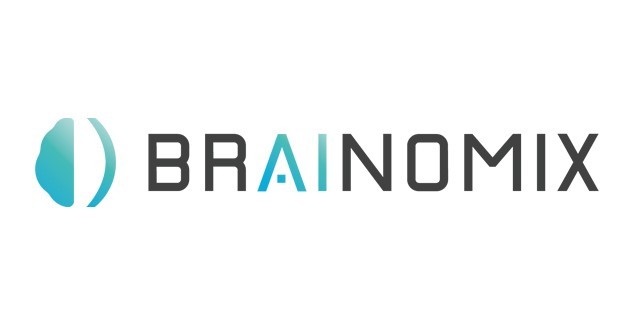 Corporate Supporters
Corporate Supporters
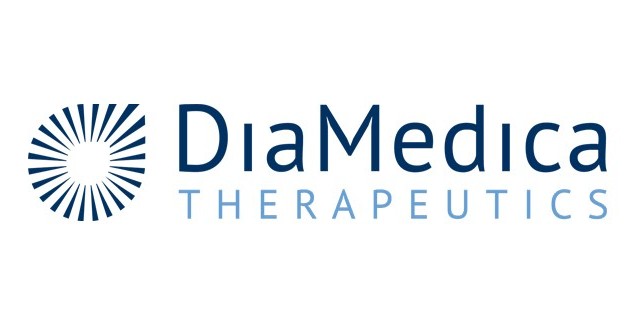 Corporate Supporters
Corporate Supporters
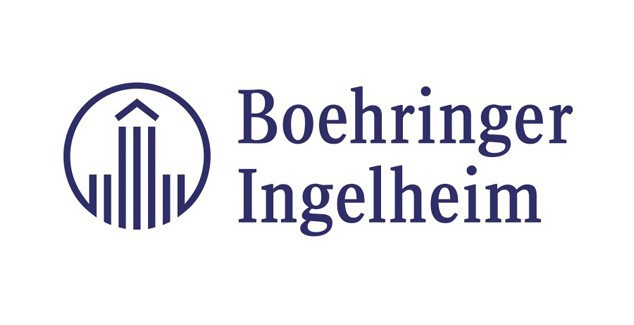 Platinum Plus
Platinum Plus
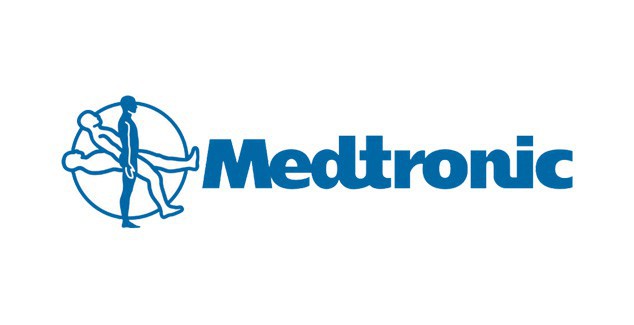 Platinum Plus
Platinum Plus
 Bronze
Bronze
 Silver
Silver
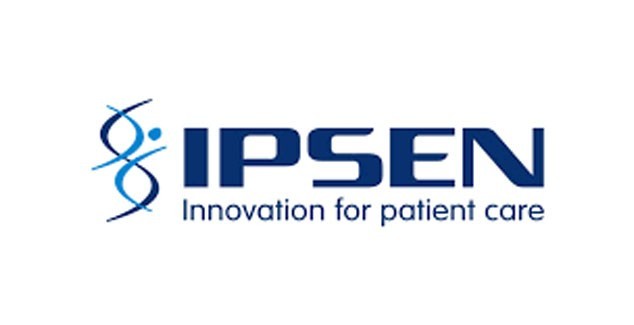 Gold
Gold
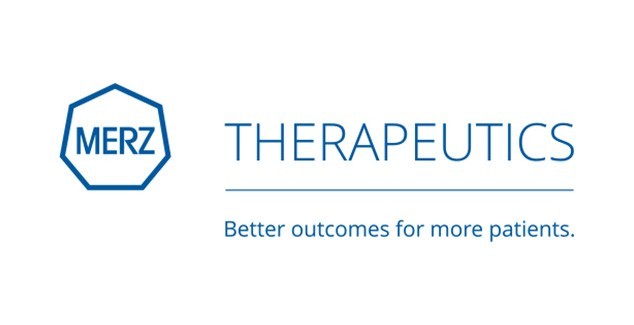 Silver
Silver
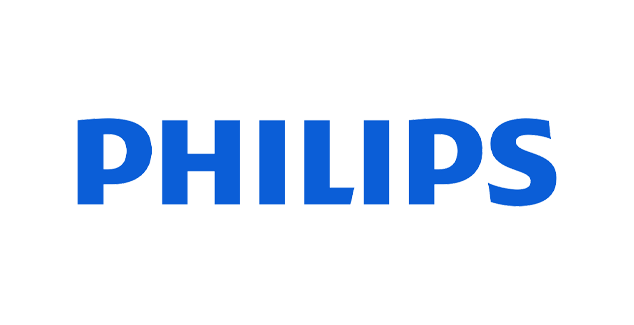 Silver
Silver
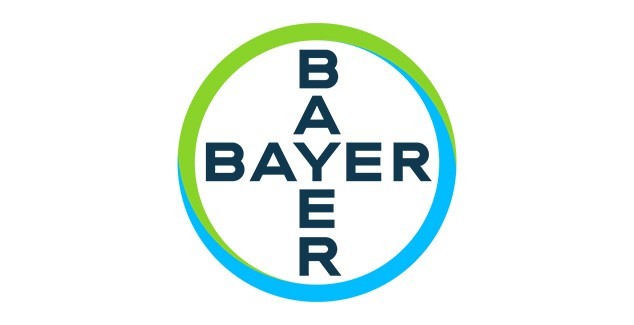 Bronze
Bronze
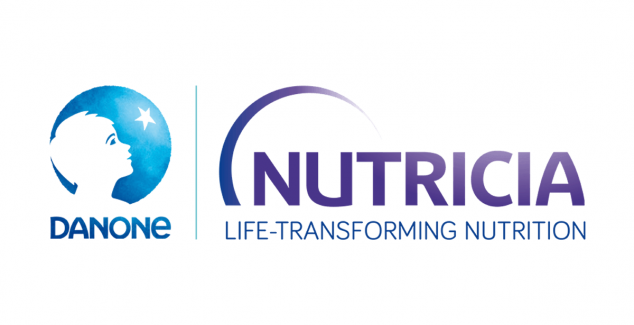 Bronze
Bronze
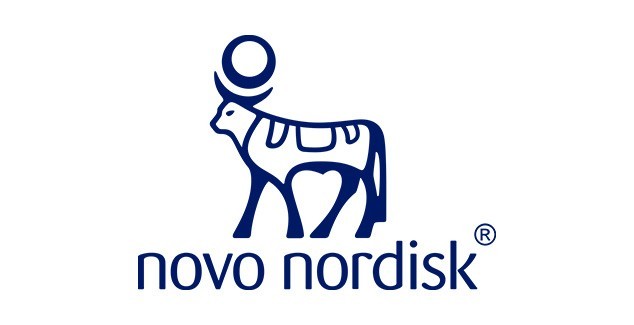 Bronze
Bronze
 Bronze
Bronze
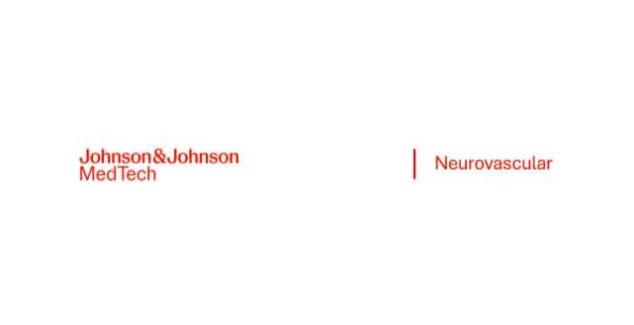 Silver
Silver